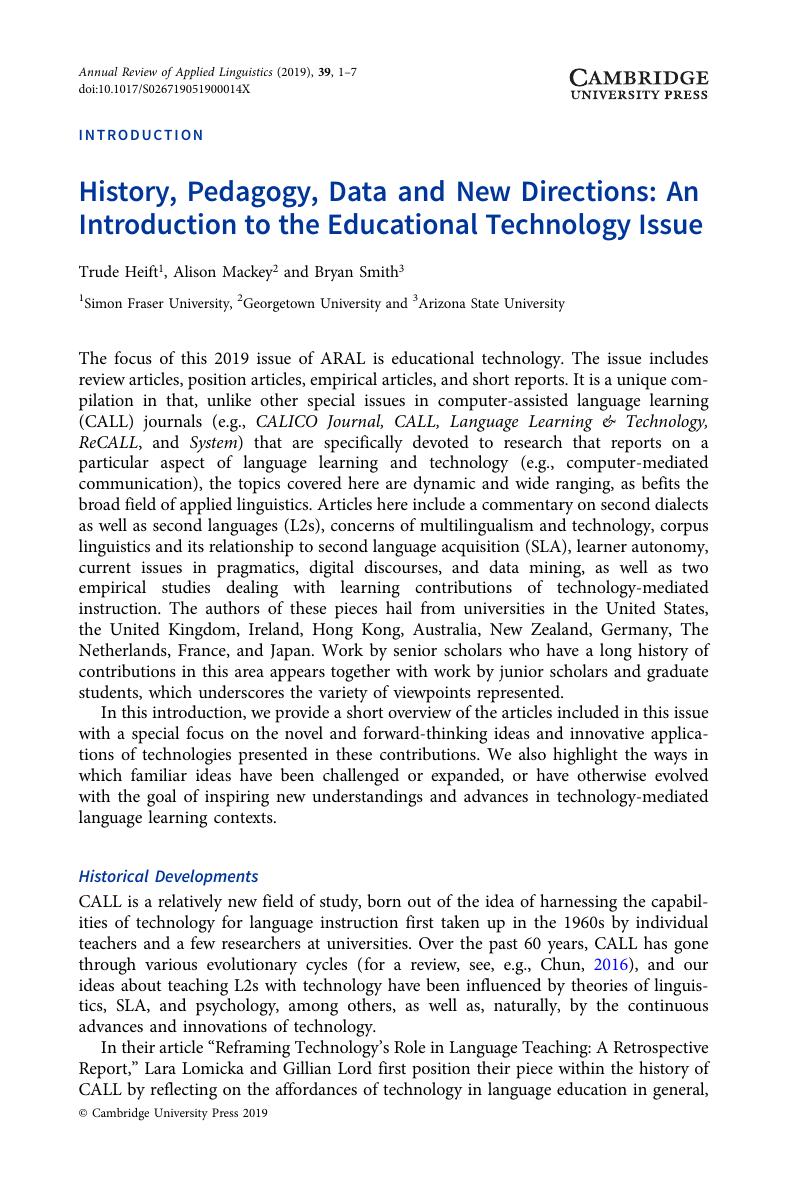Crossref Citations
This article has been cited by the following publications. This list is generated based on data provided by Crossref.
Mackey, Alison
2020.
The Annual Review of Applied Linguistics at 40: Looking Back and Moving Ahead.
Annual Review of Applied Linguistics,
Vol. 40,
Issue. ,
p.
1.
Bang, Hee Jin
Setoguchi, Eric
Mackey, Alison
and
Fujii, Akiko
2024.
L2 learning outcomes of a research-based digital app for Japanese children.
Studies in Second Language Acquisition,
Vol. 46,
Issue. 2,
p.
504.
Bahari, Akbar
and
Li, Rui
2024.
Revisiting technology-assisted language learning affordances for language components: a decade survey.
Interactive Learning Environments,
Vol. 32,
Issue. 10,
p.
7301.




